Sand Tray: Midterm Part 1: History of Sand Tray - Jonathan V., Mercer Univ. Student, Summer 2013
by Jonathan
(Lawrenceville, GA)
Margaret Frances Jane Lowenfeld was born in London in 1890. She was a pediatrician and child psychiatrist and is generally credited with first developing sand tray therapy. In 1918, Lowenfeld was asked to join a medical relief mission to Poland where she became interested in what enabled some children to survive and even flourish in spite of trauma. Lowenfeld was inspired by memories of a book, Floor Games by H.G. Wells, in which Wells describes the elaborate worlds he and his two sons created while playing on the floor with miniature toys. Lowenfeld was impressed by the engaging and creative nature of this type of play and began adapting this idea to her counseling institute, assembling a collection of miniature toys in boxes. Lowenfeld would have a child client combine these toys in metal trays containing sand and water to create “world pictures.” This technique came to be called the “Lowenfeld World Technique.” Lowenfeld found that the thought processes of children and adults were different. Her goal with her World Technique was to provide her child clients with a means to express their mental and emotional experience in a way that could be recorded and studied. Of her technique, Lowenfeld said:
"My own endeavor in my work with children is to devise an instrument with which a child can demonstrate his own emotional and mental state without the necessary intervention of an adult either by transference or interpretation, and which will allow of a record being made of such a demonstration. My objective is to help children to produce something which will stand by itself and be independent of any theory as to its nature."
At a Paris clinical conference in 1937, this technique was first demonstrated. Carl Jung was in attendance at this conference and analyzed the world presented by Lowenfeld. A student and friend of Jung, Dora Marie Kalff, learned about Lowenfeld’s technique and adapted it into the technique she called sandplay. Jung had recognized Kalff’s talent in working with children and encouraged her to pursue this unexplored area of Jungian psychology. Kalff found that traditional Jungian analysis in not effective with children as they do not yet developed cognitively or verbally to the extent that they can participate in traditional analysis. In 1954, she attended a lecture about the World Technique presented by Lowenfeld. Kalff saw in the World Technique a symbolic tool with which children could express their mental and emotional experiences. In 1956, Kalff went to London to train with Lowenfeld.
Kalff recognized the importance of Lowenfeld’s contribution, stating:
"She understood completely the child’s world and created with ingenious intuition a way which enables the child to build a world—his world—in a sandbox”
However, over time Kalff’s and Lowenfeld’s approaches began to differ. For example, Lowenfeld would interpret the worlds of her clients prior to the end of treatment, but Kalff believed that a delay in interpretation was important as it gave the client the chance to experience change at the deepest levels of his/her psyche. In the late 1950’s, Lowenfeld and Kalff agreed to the difference in names, World Technique and sandplay, in order to differentiate between their individual approaches.
Kalff’s sandplay took the world creation of Lowenfeld’s World Technique and incorporated the Jungian archetypes in the process. Kalff’s interest in eastern philosophy also contributed to both her technique as well as her therapeutic attitude. In 1966, Kalff published her book, Sandplay: A Psychotherapeutic Approach to the Psyche. This book, mainly focused on using sandplay with child clients, provides a good introduction to Kalff’s technique. In 1985, Kalff along with a number of other therapists, most of whom were Jungian analysts, decided to found the International Society for Sandplay Therapy (ISST) in order to provide a more formal structure for the study and practice of sandplay techniques. The ISST provided guidelines both for the training of sandplay therapists and established requirements for teachers of the technique.
There are presently two main schools of Sand Tray Therapy. The first is a continuation of Kalff’s Sandplay. The second is Sandtray-Wordplay created by Dr. Gisela Schubach De Domenico. Dr. Domenico developed her technique while studying under Dora Kalff. She sees the sand tray as a transformational tool for the client. Dr. De Domenico opened her Vision Quest Into Symbolic Reality training program in 1984 to teach her techniques to mental health professionals and educators.
__________________________________________________
References
Dr. Margaret Lowenfeld Trust. Retreived from http://www.lowenfeld.org/index.html.
Homeyer, L. E. and Sweeney, D. S. (2011). Sandtray Therapy: A Practical Manual 2nd ed. New York: Routledge.
Kalff, M. On the History of ISST. Retreived from http://www.isst-society.com/homeng.php?site=history.
Turner, B. A. (2011). Sandplay Therapists of America. The History and Development of Sandplay Therapy. Retrieved from http://www.sandplay.org/history.htm.
Vision Quest Into Symbolic Reality. Retreived from http://vision-quest.us/vqisr/index.htm.
Disclaimer: This website and its content is intended for trained licensed mental health professionals and school certified mental health professionals to use for their clients / students at their own discretion.
*If you ignore the disclaimer above are using these techniques on yourself and you feel any discomfort or upset it is highly suggested that you seek out a licensed mental health professional immediately.
"Beyond Art Therapy" is the concept from Dr. Stangline that combines all creative fields in therapy. It is not the traditional "art therapy" but goes beyond to include sand tray therapy, play therapy, mindfulness, meditation, color therapy, cognitive behavioral therapy, and a vast majority of other therapies.
For any other type of mental health emergency call your local 911 / Police Number immediately.
Dr. Stangline does not offer advice / suggestions to anyone who is not a professional mental health provider, or a student who is studying this field and has questions about mental health programs of study.
See our Exciting Selection of eBooks:
Award Winning:
Creative Counseling 101 eBook
Our Best Seller!
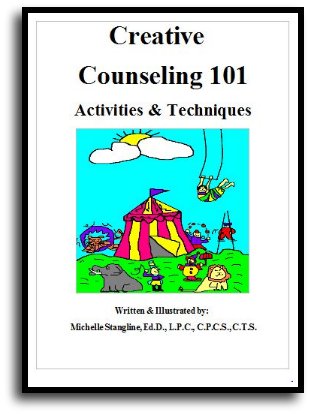
Step By Step Therapy:
Learn how to be a more Creative Therapist with the Book that started it all!
- Graduate School Counseling book used by hundreds of graduate counseling students!
- Includes full color reproducible worksheets with most activities.
- Winner of the Counselor Writer of the Year Award, 2011, Georgia Regional Award
Download Your Copy Today Only $39.95:
See Creative Counseling 101 eBook Information Here:
Get the Set
of all four
eBooks for only $98.95:
An incredible collection of how to do therapy eBooks!
A $159.80 Value,
You Save Over $60!
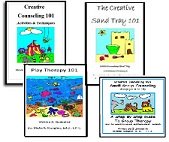
Get your complete set of the Creative Counseling 101.com eBooks by Dr. Michelle Stangline for only $98.95, that's less than $25.00 per eBook (Regular Price is $39.95 for each eBook.).
Your complete set includes:
- Creative Counseling 101
- Creative Group Counseling 101
- Creative Play Therapy 101
- Creative Sand Tray 101
For more information click the link below:
See Complete Set of eBooks For Sale Here:
New!!! "Beyond Art Therapy" 101 eBook
Over 300 pages of Beyond Art Therapy activities and techniques. Learn what I teach graduate counseling students!
See the link below for more information.
Only $39.95
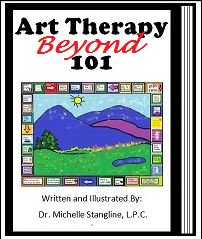
See More Invividual eBooks For Sale:
Sand Tray Therapy 101 eBook:
Learn how to do Sand Tray Therapy or enhance your skills.
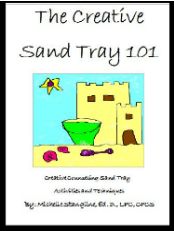
Play Therapy 101 eBook
Learn how to do play therapy or enhance your skills.
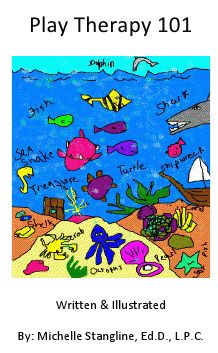
Small Group Counseling eBook For Sale:
Learn how to do creative group therapy and enhance your skills.
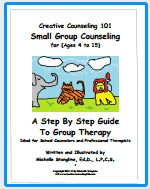
School Counselor Guidance Lesson & Social Stories eBook for sale:
Get a year's worth of school counselor guidance lessons with "Creative Warm & Fuzzy Classroom Guidance Lessons eBook". Introduce your students to the "Warm & Fuzzy Way". Click the link below for more information:
Warm & Fuzzy School Counselor Guidance Lessons eBook
